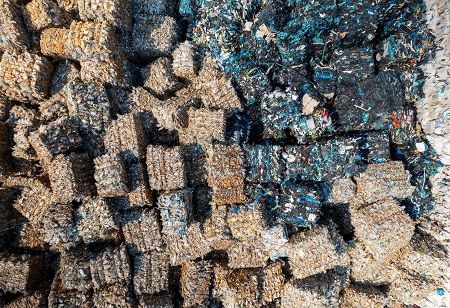
In 2002, Bangladesh experienced 248.9 days worth of power outage and in 2005, Albania witnessed 194.3 days of electrical outage. The energy crisis is only getting worse in numerous countries, with the rising electricity costs coupled with primitive infrastructure which is in turn leading to inefficient production. Renewable sources have emerged as an antidote to this chaos and are simultaneously solving the energy crises while mitigating climate change and combating waste management.
“A warm light for all mankind to share” is a famous line from Loki the Trickster, which in this scenario can also be interpreted as how access to clean energy can solve most of the problems we currently face. Advanced Conversion Technologies have emerged as promising avenues to provide clean energy to the world, these technologies not only tackle the mounting landfills of waste but also contribute to resource recovery and energy generation. Several European nations have implemented these technologies in their energy grids and have succeeded in meeting their energy requirements. Further fine-tuning of these technologies can result in the elimination of fossil fuels for power. Here we take a look at how ACTs are contributing to clean energy generation all across the world.
ACTs permit the recovery of valuable resources from waste pools, not limited to energy, fuels, chemicals and nutrients. By recovering these resources ACTs contribute to resource conservation and reduce dependency on finite natural resources. They can convert organic waste to renewable energy sources such as biogas and biofuels and as a side effect offsets greenhouse gas emissions.
The Okhla Waste-to-Energy plant in Delhi utilizes this technology to convert municipal solid waste into electricity. This action not only reduces the burden on landfills but also provides a sustainable source of electricity for all households in the region.
This technology offers a simple yet effective means to divert waste, which plagues landfills and incinerators, reducing the environmental burden associated with traditional waste disposal methods. This diversionary tactic helps in the reduction of carbon emissions, minimizing leachate contamination and relieving the pressure on limited landfill space.
Landfills are finite resources that are rapidly reaching capacity in many regions. By diverting waste from landfills, ACTs help to extend the lifespan of existing landfill sites and reduce the need for new landfills, thereby preserving valuable land and natural habitats.
"Green hydrogen made with renewable power will have a role to play as an aviation fuel and as a substitute for natural gas," Matthias Rebellius, AG Managing Board Member, Siemens & CEO of Siemens Smart Infrastructure.
The Zero Waste Scotland initiative promotes the adoption of advanced conversion technologies to divert biodegradable waste from landfills. By implementing anaerobic digestion and composting facilities, Scotland has significantly reduced the amount of biodegradable waste sent to landfills, contributing to environmental sustainability.
“One man’s trash is another man’s treasure” is apt for this scenario. ACT plays a pivotal role in our road to a low carbon economy via renewable energy generation. This technology can create other sources of energy from trash, such as biofuels and biogas. These said sources can displace fossil fuels, combat climate change and have a huge input in energy security.
Renewable energy sources generated from ACTs provide a decentralized and secure energy supply, reducing dependence on imported fossil fuels and enhancing energy independence. This resilience is particularly important in regions vulnerable to energy supply disruptions or geopolitical instability. "A transition to renewable energy will require significant investment in new infrastructure and technology, as well as supportive policies and international cooperation." Devin Narang, Managing Director, Sindicatum Renewable Energy.
The Olaroz Biogas Plant in Argentina utilizes anaerobic digestion technology to convert agricultural waste into biogas. This biogas is then used to generate electricity, providing a renewable energy source for the local community and reducing greenhouse gas emissions.
Efficient energy generation via ACTs adheres to all principles of a circular economy. Closing the loop on the waste stream and endorsing resource circulation, i.e., converting waste to valuable products and feedstocks, facilitates a more sustainable and circular approach to managing resources.
ACTs create economic value from waste by transforming it into valuable products and commodities. This creates new revenue streams and business opportunities, stimulates innovation and investment in the waste management sector, and drives economic growth and job creation.
The Circular Economy Park in Kalundborg, Denmark, exemplifies the integration of advanced conversion technologies into a circular economy framework. By co-locating industries and sharing resources such as heat, water, and materials, the park maximizes resource efficiency and minimizes waste generation, fostering a sustainable and symbiotic industrial ecosystem. "The concept of a circular economy offers solutions tailored to the plastic waste crisis. Its core principles are reducing waste and pollution through smarter design and keeping materials circulating in the economy at their highest value for as long as possible," Mohammed Ferdous Hasan, Managing Director, Krones Bangladesh Limited. The above examples stand as a testament to how the answers to the ongoing energy crises can come from the most unlikely of sources. One of the 21st century's biggest problems is climate change and energy crisis. this technology can act as the stone which hits those two birds. As we continue to harness the potential of ACTs and embrace innovation and collaboration, we have the opportunity to build a greener, cleaner world for generations to come, where waste is not seen as a burden but as a valuable resource to be utilized and recycled in a closed-loop system.
We use cookies to ensure you get the best experience on our website. Read more...